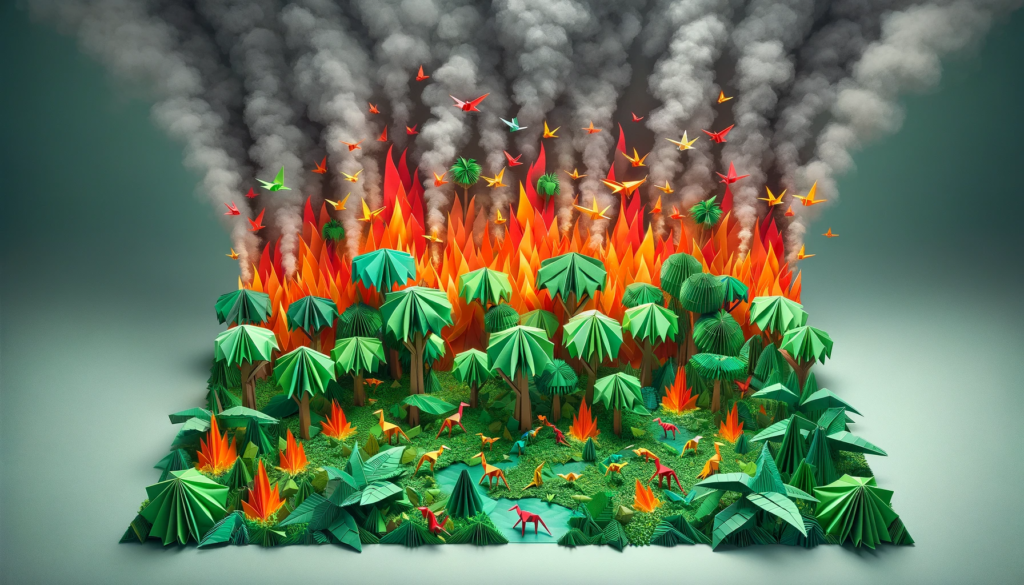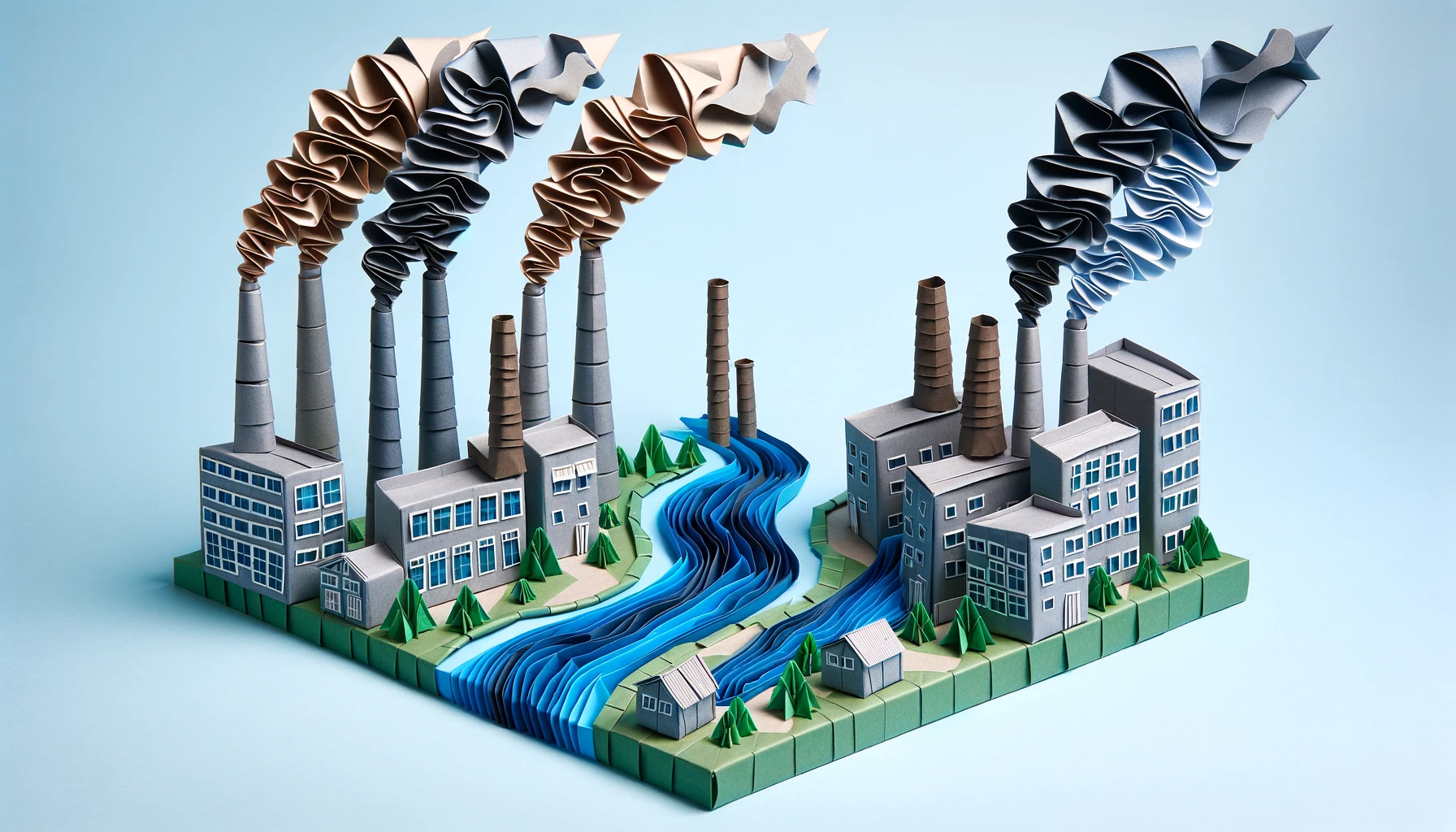Below are key points and full length essay on Air Pollution for students from 5th to 10th standard. Feel free to use them for school work.
10 lines for essay on Air Pollution for class 5 to 7
- Air pollution happens when harmful substances like smoke, dust, and gases mix with the air we breathe.
- Cars, buses, and trucks release a lot of smoke, making them big contributors to air pollution. Factories add to air pollution by releasing gases and chemicals into the air.
- Burning crop residue every year in winters leads to air pollution in Delhi and other northern parts of India. Burning fuels like coal, oil, and gas for energy also creates air pollution.
- Bush fires in many countries like Australia create a lot of pollution lead to whole jungles getting burnt and results in death of animals and birds.
- When we breathe in polluted air, it can make us cough, feel short of breath, and even worsen asthma.
- Air pollution is not just bad for people; it also harms animals, plants, and our environment.
- Smog, a type of air pollution, looks like a foggy cloud over cities and can make it hard to see.
- Some of the gases in air pollution trap heat around the Earth, leading to changes in weather and climate.
- We can help reduce air pollution by using public transport, cycling, walking, and planting trees.
- It’s important for everyone to work together to reduce air pollution so we can have cleaner air and a healthier planet.

Essay on Air Pollution in 200 words for class 5 to 7
Title: Air Pollution: Understanding the Invisible Threat
Imagine stepping outside and instead of breathing fresh air, you breathe in smoke and dust. This is what happens when air pollution gets too high. Air pollution is when harmful substances like smoke, dust, and gases mix with the air we breathe. It’s a big problem in many cities around the world and affects our health and the health of our planet.
What Causes Air Pollution?
1. Cars and Buses: The smoke that comes out of vehicles adds a lot of pollution to the air.
2. Factories: Big factories release smoke and gases into the air.
3. Burning Fossil Fuels: When we burn coal, oil, or gas for energy, it creates air pollution.
4. Agriculture: Some farming activities also contribute to air pollution.
Why is it a Problem?
Breathing polluted air is bad for our health. It can cause problems like coughing, trouble breathing, and can make asthma worse. It’s especially harmful to kids, older people, and those with health issues. Besides, air pollution doesn’t just stay in one place; it can travel long distances, affecting people and nature far away.
Air Pollution and Climate Change
Air pollution also contributes to climate change. Some of the gases released into the air, like carbon dioxide, trap heat from the sun, making our planet warmer. This leads to changes in weather patterns, melting ice caps, and rising sea levels.
What Can We Do?
We can all help reduce air pollution. Here are some things we can do:
1. Use Public Transport or Carpool: Fewer cars on the road mean less pollution.
2. Save Energy: Turning off lights and electronics when not in use helps reduce pollution.
3. Plant Trees: Trees help clean the air.
4. Educate Others: Share what you know about air pollution and how to stop it.
Air pollution is a big problem, but if we all work together, we can make the air cleaner and healthier for everyone. Every small step we take makes a difference, and it helps protect our beautiful planet. 🌍✨

10 lines for essay on Air Pollution for class 8 to 10
- Air pollution is the contamination of the air we breathe with harmful substances like gases, dust, and smoke, which can be dangerous to our health and the environment.
- Major sources of air pollution include vehicle emissions, industrial activities, burning of fossil fuels like coal and oil, and agricultural practices.
- The release of gases such as carbon monoxide, sulfur dioxide, and nitrogen oxides contributes significantly to air pollution.
- Particulate matter, tiny particles in the air, can penetrate deep into our lungs and cause respiratory issues, heart disease, and even lung cancer.
- Smog, a visible form of air pollution, is often seen as a thick fog over cities, severely reducing air quality and visibility.
- Air pollution has a detrimental impact on wildlife and ecosystems, affecting plant growth and damaging natural habitats.
- Children, the elderly, and people with pre-existing health conditions are more vulnerable to the harmful effects of air pollution.
- Air pollution is a key contributor to global warming and climate change, as greenhouse gases trap heat in the Earth’s atmosphere.
- Solutions to reduce air pollution include transitioning to renewable energy, using public transport, planting trees, and implementing strict air quality regulations.
- Addressing air pollution requires collective action from governments, industries, and individuals to ensure a healthier environment for future generations.
Essay on Air Pollution in 200 words for class 8th to 10th
Title: Air Pollution: A Growing Concern
Air pollution, a critical environmental issue, has escalated alarmingly in recent years. It is the contamination of our atmosphere by harmful substances, resulting in detrimental effects on human health, the environment, and the global climate.
Primarily, air pollution is caused by the emission of gases and particles from industrial processes, vehicle exhausts, burning of fossil fuels like coal and oil, and agricultural activities. These emissions include hazardous pollutants like carbon monoxide, sulfur dioxide, nitrogen oxides, and particulate matter. The presence of these pollutants in the air we breathe can lead to severe health issues, including respiratory infections, heart disease, stroke, and lung cancer.
One of the most visible impacts of air pollution is the formation of smog, a thick, fog-like layer in the air, particularly prevalent in large cities. This not only reduces visibility but also poses serious health risks, especially to children, the elderly, and those with pre-existing health conditions. Additionally, air pollution is a significant contributor to global warming. The greenhouse gases released into the atmosphere trap heat, leading to climate change, which brings about extreme weather events, rising sea levels, and disrupted ecosystems.
To combat air pollution, it is imperative to adopt cleaner and more sustainable practices. This includes transitioning to renewable energy sources, enforcing stricter emission standards for vehicles and industries, and promoting public transportation and electric vehicles. On an individual level, reducing energy consumption and supporting eco-friendly initiatives can make a significant difference.
In conclusion, air pollution is an urgent issue that requires immediate and concerted efforts. Addressing it not only improves health outcomes but also contributes to the sustainability of our planet. It is a responsibility we all share for the well-being of present and future generations.

